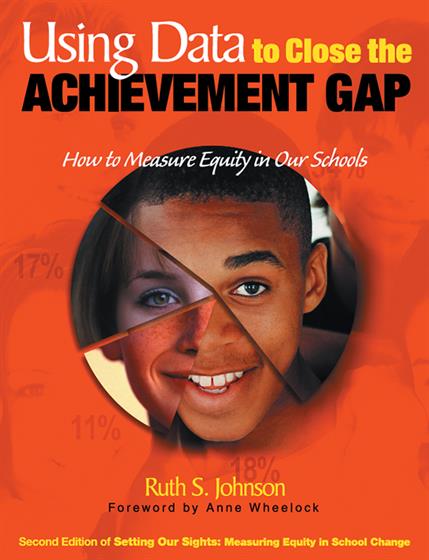Foreword: A Strategy to Challenge Inequality
Introduction: New to the Second Edition
Acknowledgments
About the Author
Part I: Setting Our Sights on Student Achievement
1. The Achievement Gap: Framing Our Minds to Set Our Sights
The Achievement Gap
Some Other Considerations
Rethinking the Issues: Creating the Conditions for Moving Forward
Stages in the Change Process: How Data Offer Help and Hope
2. Building Dissatisfaction and Killing the Myths: Examining Data as a First Step Toward Motivating Reform
The Broader Picture: Societal Implications of Undereducating Certain Populations
Similar Aspirations, Unequal Chances: Data to Dispel Myths and Demonstrate Differential Expectations and Learning Opportunities for Students
Who Has the Opportunity to Go to College?
Changing Practices and Achievement Patterns: Exploding Myths That Perpetuate Underachievement
3. Data in the Reform Process: How and Why
Key Roles for Data
Assessing Data Use and Access
Stages of the Data User Process
Using Technology to Make Strong Presentations
4. Building Leadership and Data Teams
Establishing the Need: A First Step for Highly Resistant Schools
Creating the Team: The First Step in Most Schools
The Role of the Leadership Team
Structuring the Leadership Team's Work
Team Development
The Data Team: Core to the The Data Team: Core to the School's Success in Using Data to Achieve Reform
Planning for Team Success: Team Self-Assessment of Strengths and Needs
Assessing Perspectives of Team Effectiveness
Planning for Team Leadership Development
Part II: Inquiring About Equity
5. Talking About Data
Why the Need for Dialogue
Guiding the Dialogue
Outcomes From Dialogues
Conducting the Inquiry: Measurement Dimensions and Approaches
6. Examining Outcomes
Looking at the Big Picture
Outcome Data From Standardized Test Scores: Peeling the Data
Standardized Tests for College Going
Monitoring Student Grades
Displaying Middle and High School Course Enrollment and Student Overall Progress in College Preparatory Courses
Outcomes: Student Graduation Rates
College-Going Rates
Nonacademic Measures Related to Outcomes
7. Assessing Policies and Practices
Part I: Instruments
Assessing Perceptions of Attitudes, Readiness, and Commitment to Reform at the School
Process Indicators
Assessing Institutional Reform in the Academic Culture of Schools
Other Instruments to Assess Equity
Schools' and Districts' Assessments of Delivery of Precollege Guidance
Characteristics of High-Performing and Low-Performing Counseling Programs
Counselor College Preparatory Record Keeping for Individual Students
Which Counselors Are Providing College Access to Students?
Counselor's Plans for Counselees
Part II: Existing School Documents
How Does the Master Schedule Reflect Practices and Goals?
Assessing Documents, Policies, and Practices on How Time Is Used
Examining School Calendars
Teacher Plan Books
Part III: Assessing Equitable Classroom Practices
Survey--The Equitable School Classroom
Teacher Observations
Observing Students in Class and School
Parent and Student Information
8. Listening to Student and Parent Voices
Student and Parent-Guardian Questionnaires
Aspirations and Reality
Listening to Students' Voices Regarding the Academic Culture of the School
9. Evaluating Programs and Interventions
Analyses of Efforts to Raise Student Achievement
Assessing Elementary Programs and Practices
Assessing the Improvement of College Preparation and College-Going Rates
Professional Development
10. Using School Indicators to Answer Critical Questions
How and When to Gather Indicators
Combining Indicators to Answer Critical Questions
Sample Indicator Combinations
11. Will We Know It When We See It? Visioning, Planning, and Implementation
Planning for Monitoring
Plan for Monitoring the Improvement of College Preparation and College-Going Rates
The Role of the External Resource Person
Resources for Equitable School Reform
Bibliography
References
Index


